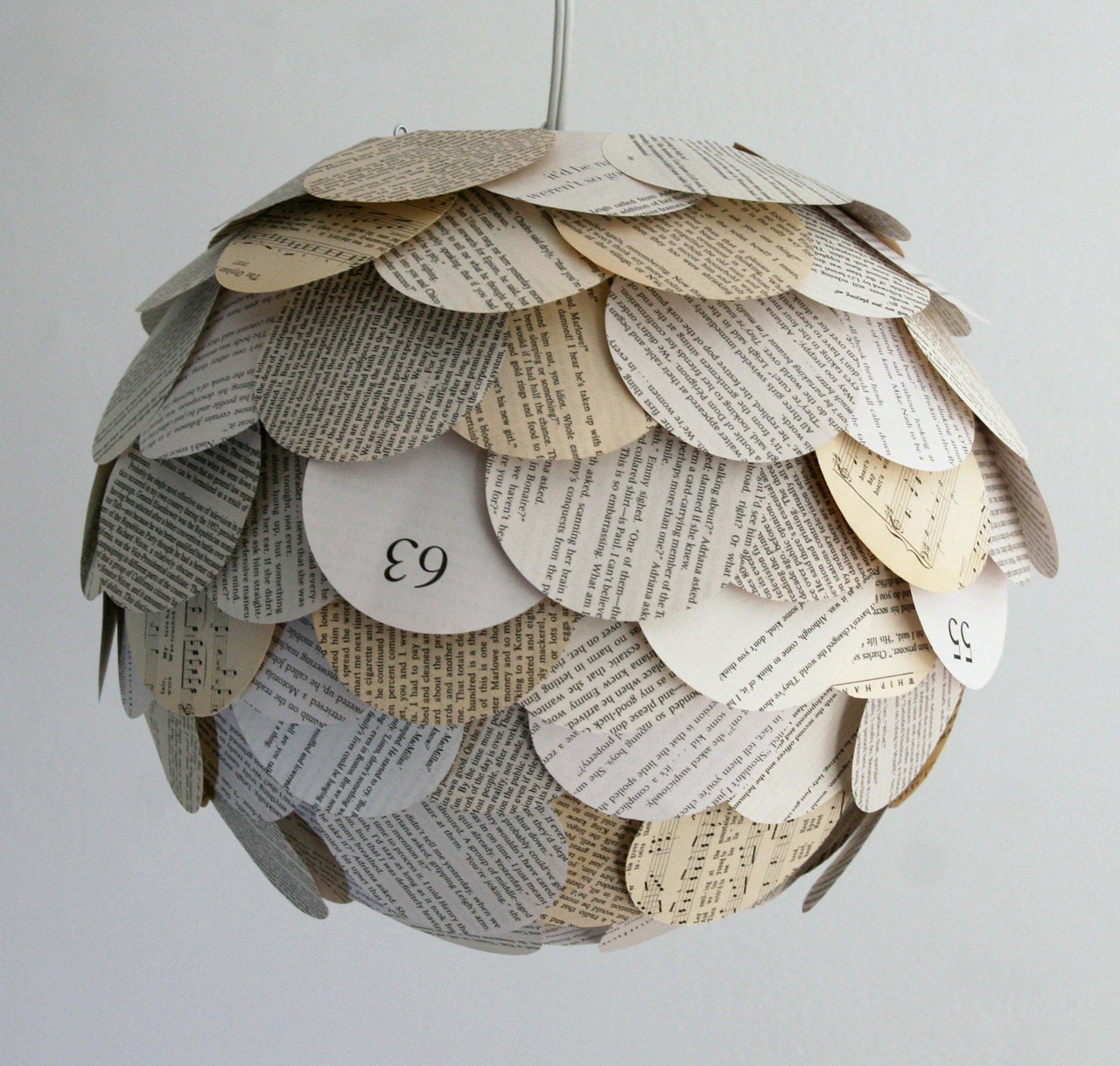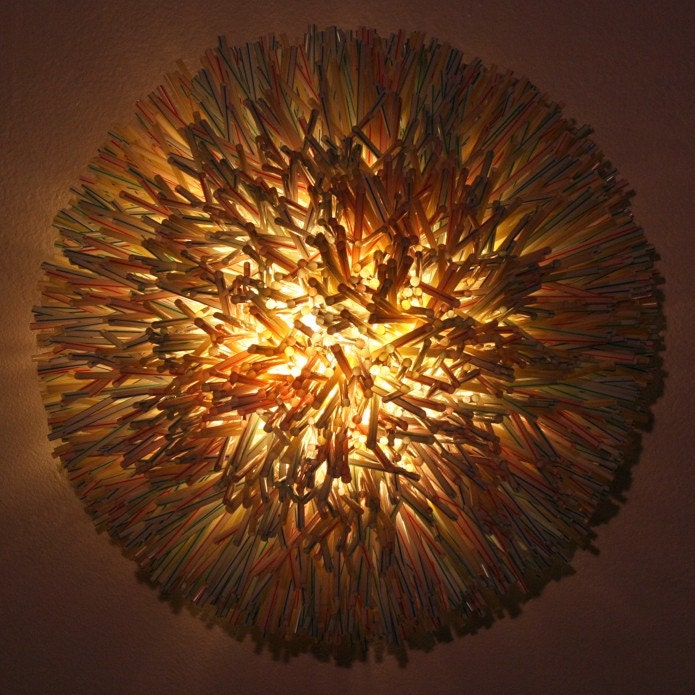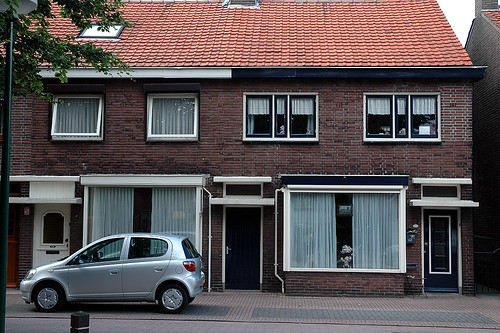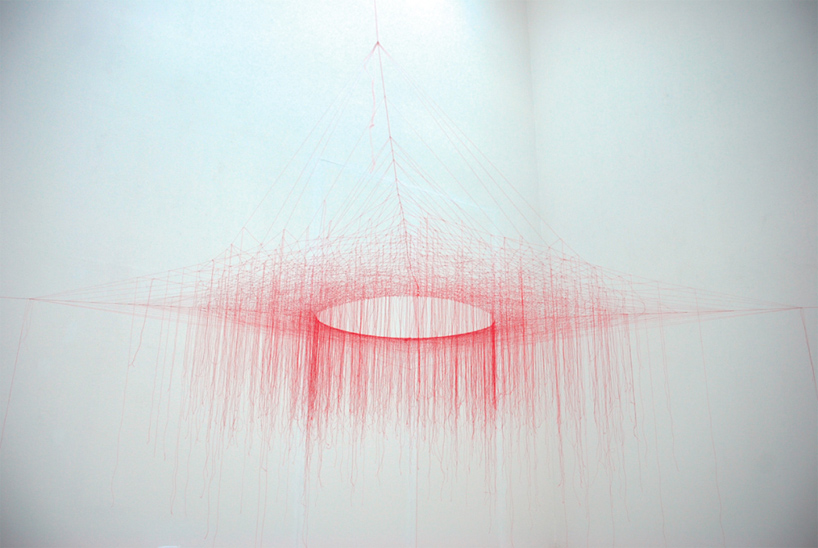 |
| full view, from designboom |
Akiko Ikeuchi knots silk thread in a process that takes up to a month for gallery installations. The works are room size scales and the work is so delicate and subtle which I think reflects the process of making it and the personality of the artist. The knots seem to reflect the daily disruptancies that one face, one by one, Ikeuchi documents these experiences into a a narrative of collective moments. One knot is one moment in time, brought together into a story. Stunning.
 |
| detail of installation showing the knots, via here |
This is a google translation of the artist's own description of the work, from Japanese to English. I believe the translation is not completely accurate but I reckon you still get the just of the intent, in fact, it is very beautiful.
ー four axonemal Azuma Minami northwest respectively, are stretched to the northeast ー southwest.
Yarn and yarn cross connectedness are all tied together with 引合Tsu.
Yarn and yarn cross connectedness are all tied together with 引合Tsu.
Red is the color of my approach to life and responded to the incident which occurred in the past two years.
Is evidence of every single knot in my day.
Is evidence of every single knot in my day.
It has spanned many times is still tied at first glance, that appears to be strong and stable,
Breaks down quickly once the off-axis yarns.
Breaks down quickly once the off-axis yarns.
The world is made up of subtle fragile balance.
□
"A feeling" came over the fade again.
Kind of vibration?
Words can not.
And narrowed his eyes, threw out - and as you seem to try to slightly roll the brain.
If they disappear quickly enter forcibly separated.
Kind of vibration?
Words can not.
And narrowed his eyes, threw out - and as you seem to try to slightly roll the brain.
If they disappear quickly enter forcibly separated.
The silk tie by keeping it connected and the sensor.
Some exposure to light and air, see how hiding something that faintly.
That you kept going away before it's light and air inside the right or not.
Because I have that desire to with it.
That you kept going away before it's light and air inside the right or not.
Because I have that desire to with it.
I believe this particular piece was exhibited at gallery 21 in 2009.
 |
| Edith Derdyk, Slice, 2003 4.000 meters of black cotton line, 2.800 stapples and 4 days of setting up Arco Feira de Arte, Madrid, Spain photo: Edith Derdyk |
To continue on artists that work with string and thread, Brazilian artist Edith Derdyk's work is also absolutely stunning.
 |
| Edith Derdyk, Rasures III, 1998 60.000 meters of black cotton line, 10.000 stapples and 13 days of setting up City Canibal, curator: Daniela Bousso Paço das Artes, São Paulo, Brazil photo: Gal Oppido |
It is the visual intensity and the rigorous process of creating the piece that impress and interest me the most. Derdyk's process begins with drawing and the idea of the line, according to the artist.
 |
| Edith Derdyk, Projects and sketches, 1999/2001 Ball-point pen, paper |
 |
| Interlineation, 1998 Drawings Paper, black cotton line, vinyl glue 50 x 180 cm photo: Rômulo Fialdini |
This is quite a full on description of her work by Arnaldo Artunes in his mini essay Cocoon, found here:
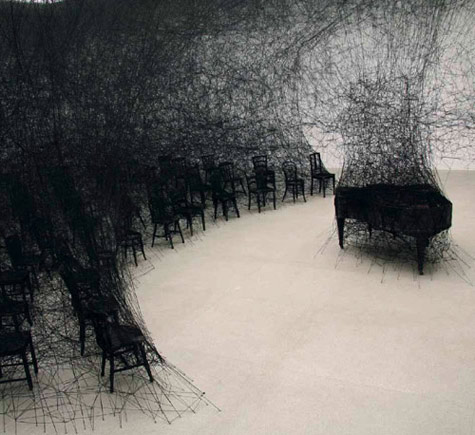 |
| Chiharu Shiota, In silence, 2009 centrepasquart, biel bienne, switzerland |
I have also had a huge crush and massive respect and awe for installation and performance artist Chiharu Shiota, who's work is short of absolutely gobsmackingly spine chillingly god damn spectacular and who recently exhibited at the 'detached' gallery in Hobart that I sadly missed. Above is a 2009 piece from In silence, a progressive art/installation piece that has been erected and showed at a number of different locations since 2007 when it was part of a performance at the Kanagawa Arts Foundation, in Kanagawa, Japan. (below). Of course, the process of making this space, the setting up and weaving of the wool is of particular interest for me but also the intent of Shiota, who wants to depict the sound of silence in space.Very beautiful.
 |
| In Silence, Toshi Ichiyanagi x Unit2007, found here |
 | ||
| Chiharu Shiota, "In Silence" (2008). Piano, Chairs, Wool |
